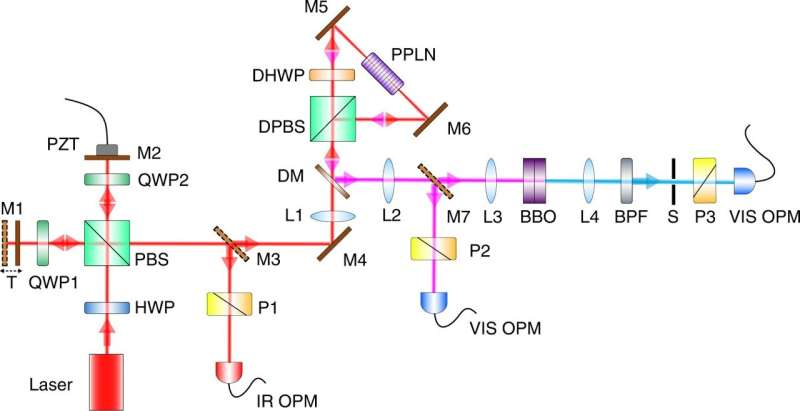Researchers reveal new mechanism for optical phase amplification

Recently, a research team led by Prof. Guo Guangcan, Prof. Shi Baosen and Prof. Zhou Zhiyuan from the University of Science and Technology of China (USTC) of the Chinese Academy of Sciences, realized a harmonics-assisted optical phase amplifier. This work was published in Light: Science & Applications.
In modern physics, phase change is an important parameter for physical quantity measurement during interference. To improve measurement accuracy, amplifying the relative phase is a promising pathway. Previously, researchers in quantum optics tended to utilize the multi-photon number and path-entangled state. Unfortunately, this approach faces difficulties in preparation and measurement. New principles to amplify the optical phase are needed.
In their previous study of optical interference based on non-linear effects, the researchers discovered that the relative phase between the superposed orbital angular momentum modes would double. Inspired by this discovery, they hypothesized and verified that in non-linear processes, the phase could also double based on other degrees of freedom, and that cascading could help realize this doubling.
In the three-wave mixing process, annihilating two photons at a fundamental wavelength creates a photon at the second harmonic wavelength. The phase information carried by the two photons could be coherently transferred to the created photon so that the phase would be amplified. In principle, the phase can be amplified to any integral times by recycling and cascading the process.
They further testified that the principle is independent of the wavelength, laying the foundation for amplifying the phase more times through recycling.
Through cascading and recycling, the researchers were able to realize phase amplification even more times with a more intense laser, and the principle will be applied to optical precision measurement in the future.
More information: Wu-Zhen Li et al, Harmonics-assisted optical phase amplifier, Light: Science & Applications (2022). DOI: 10.1038/s41377-022-01003-3
Journal information: Light: Science & Applications
Provided by Chinese Academy of Sciences





















